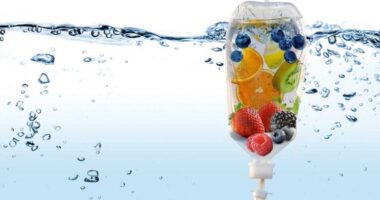
About the Therapy
The most popular Chelation protocol uses EDTA (ethylene diamine tetra-acetic acid), a synthetic amnio acid, along with saline, vitamins and minerals. This is then infused intravenously through a small catheter placed in a vein. The EDTA in the solution binds with metals in the body and carries them out through the urine.
Another intravenous agent used by some physicians for mercury detoxification is called DMPS (2,3-Dimercapto-1-propanesulfonic acid). There is also an oral chelating agent called Succimer (Dimercaptosuccinic acid, also known as DMSA), which is used for the treatment of lead poisoning and is also used by some physicians to remove mercury from the body.
Chelation therapy remains the undisputed treatment-of-choice for lead poisoning, even in children with toxic accumulations of lead in their bodies as a result of eating leaded pain from toys, cribs, or walls. So far, the Food and Drug Administration (FDA) approves chelation therapy only for heavy metal poisoning, such as lead and iron poisoning. However research supports chelation therapy may help reverse chronic degenerative diseases such as atherosclerosis, Alzheimer’s Disease, autism, arthritis, and may even reduce the risk of cancer.
Although not FDA approved, many medical professionals believe that because EDTA can reduce the amount of calcium in the bloodstream, chelation can be used to treat atherosclerosis (hardening of the arteries). This stems from the fact that there is calcium found within the plaques of diseased blood vessels, and chelation is a less expensive alternative to coronary artery bypass surgery, angioplasty, and other conventional medical treatments.
Many conditions treated by chelation are chronic in nature developing over many years. For this reason these chronic diseases require long courses of treatments, which consists of 20 to 50 separate infusions, depending on each patient’s individual status. Each treatment takes about 2 hours and patients normal receive one to three treatments a week.
EDTA is relatively non-toxic and safe with minimal risk of serious side effects. Occasionally, patients may suffer minor discomfort at the site where the needle enters the vein. Some temporarily experience mild nausea, dizziness, or headache immediately following treatment, but in the vast majority of cases, eating a proper meal before chelation and a snack during the infusion will relieve these minor symptoms.”—My Practice Connect®

Free Consultation
(Aesthetics/PRP/IV Nutrient services)
Get in touch with us and we will answer any questions you may have.



